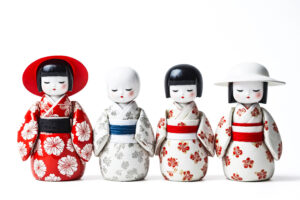In the vibrant tapestry of Japanese cuisine, one ingredient stands as a testament to the country’s rich cultural heritage and innovative spirit: agar. Known in Japan as "kanten," this plant-based gelatin has transcended its humble origins to become a staple in both traditional and modern culinary practices. This article delves into the world of agar, exploring its deep cultural roots, its significance in Japanese cuisine, and how it has evolved over the centuries from a simple seaweed derivative to a global culinary sensation.
Unveiling Agar: A Deep Dive into Japan’s Gelatin
Agar, a gelatinous substance derived from red algae, has been a cornerstone of Japanese cuisine for centuries. Unlike its animal-based counterparts, agar is vegetarian, making it a versatile ingredient in the diverse world of culinary arts. Its ability to gel without refrigeration and its unique texture have made it a favorite among chefs and home cooks alike. This journey into the world of agar reveals not only its culinary uses but also its significance in the cultural fabric of Japan.
The Origins of Agar: From Sea to Japanese Table
The story of agar begins in the 17th century, when it was discovered in Japan. Legend has it that an innkeeper, left with excess algae, decided to discard it outside during winter. The cold weather froze the algae, and after thawing and drying, it transformed into a gelatinous substance. This accidental discovery led to the birth of agar, which quickly became an integral part of Japanese cuisine. The process of making agar, refined over generations, underscores the harmony between nature and culinary tradition in Japan.
Agar in Japanese Cuisine: More Than Just a Dessert
While many associate agar with desserts such as jellies and puddings, its role in Japanese cuisine is far more expansive. Agar is used in a variety of dishes, from soups and stews to salads and even as a healthful addition to beverages. Its neutral flavor and ability to absorb the tastes of other ingredients make it an invaluable tool in the culinary arsenal. The versatility of agar showcases the Japanese principle of "mottainai" or avoiding waste, by utilizing every part of an ingredient to its fullest potential.
The Cultural Significance of Agar in Japan
Agar holds a special place in Japanese culture, symbolizing purity, simplicity, and the elegance of minimalism. It is often used during traditional tea ceremonies and festive celebrations as a representation of refinement and hospitality. The use of agar in religious offerings and special occasions underscores its cultural value and the respect for nature that is deeply ingrained in Japanese society. This cultural reverence for agar is a reflection of the wider Japanese philosophy that balances nature, tradition, and innovation.
How Agar Transformed from a Simple Seaweed
The transformation of agar from a simple seaweed byproduct to a culinary marvel is a testament to Japanese ingenuity. This evolution was driven by a deep understanding of the natural world and a relentless pursuit of culinary excellence. Innovations in agar production techniques have made it more accessible while preserving its natural qualities. Today, agar is not only a symbol of Japanese culinary tradition but also of the country’s commitment to sustainable and ethical food practices.
The Art of Agar: Traditional Techniques Uncovered
The production of agar is an art form in itself, rooted in centuries-old techniques. The traditional method involves a meticulous process of washing, boiling, and drying the algae to extract the gelatinous substance. This labor-intensive method ensures the highest quality agar, characterized by its clarity, texture, and strength. The artisans who craft agar are custodians of an invaluable culinary heritage, preserving the knowledge and skills passed down through generations.
Agar’s Role in Japanese Celebrations and Rituals
Agar’s significance extends beyond the kitchen to the heart of Japanese celebrations and rituals. It is a staple during the New Year’s festivities, where it is used in dishes like "osechi-ryori" to symbolize a clear and bright future. Agar’s appearance in seasonal festivals and religious ceremonies reflects its role as a carrier of cultural and spiritual values. Through these rituals, agar becomes more than just a food ingredient; it is a medium through which the Japanese people connect with their heritage and express their collective hopes and dreams.
From Local Delicacy to Global Sensation: The Agar Story
The journey of agar from a local delicacy to a global sensation is a remarkable tale of cultural exchange and culinary innovation. As Japanese cuisine gained popularity worldwide, agar emerged as a novel ingredient in the global culinary scene. Its appeal lies in its versatility, health benefits, and suitability for vegetarian and vegan diets. Today, agar is celebrated not only in Japan but around the world, embodying the global appreciation for Japanese culinary traditions and the country’s influence on international cuisine.
The Science Behind Agar: Understanding Its Uniqueness
The uniqueness of agar lies in its molecular structure, which gives it the ability to form gels at room temperature and remain stable even when heated. This property makes it a valuable ingredient in both culinary and scientific applications. Agar’s high fiber content and low calorie count also contribute to its popularity as a healthful food additive. Understanding the science behind agar enhances our appreciation for this extraordinary ingredient and its myriad uses.
Innovations in Agar: The New Culinary Frontier
Innovations in agar usage are pushing the boundaries of culinary creativity. Chefs around the world are experimenting with agar to create new textures and flavors, from vegan cheeses to innovative desserts. The culinary potential of agar is limitless, offering a canvas for chefs to express their creativity while adhering to sustainable and health-conscious practices. These innovations not only enrich the culinary landscape but also highlight agar’s role in the future of food.
The Sustainability of Agar: Eco-Friendly Gelatin Alternative
Agar stands out as an eco-friendly alternative to animal-based gelatins. Its plant-based origin and sustainable production process align with the growing demand for environmentally responsible food sources. By choosing agar, consumers and chefs are contributing to a more sustainable food system that respects the planet’s resources. The sustainability of agar reinforces its relevance in today’s world, where environmental consciousness is more important than ever.
Preserving Tradition: The Future of Agar in Japan
As Japan looks to the future, preserving the tradition of agar remains a priority. Efforts to maintain traditional agar production techniques while embracing modern innovations ensure that this cherished ingredient will continue to be a part of Japanese cuisine and culture. The future of agar in Japan is a balance between honoring its rich heritage and adapting to the evolving culinary landscape. By preserving the tradition of agar, Japan continues to share its culinary heritage with the world, inviting others to experience the beauty and depth of its culture through food.
Agar, with its rich history and cultural significance, is more than just a culinary ingredient; it is a symbol of Japanese tradition and innovation. From its origins as a humble seaweed to its status as a global culinary sensation, agar embodies the principles of sustainability, versatility, and reverence for nature that are central to Japanese culture. As we explore the world of agar, we are reminded of the enduring power of food to connect us to different cultures and to the natural world. The story of agar is a testament to the creativity, resilience, and spirit of the Japanese people, and it continues to inspire culinary innovation and cultural appreciation around the globe.








